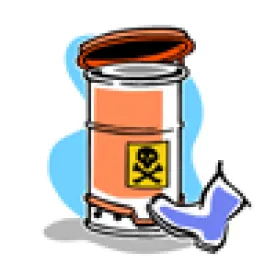On October 28, 2016, the Administrator of the United States Environmental Protection Agency (EPA) signed a rule finalizing significant modifications to the requirements governing the export and import of hazardous waste. The rule changes will go into effect on December 31, 2016, although, as discussed below, certain requirements will be phased in over time. The changes will affect transboundary shipments currently subject to 40 C.F.R. Part 262 Subpart H (regulating hazardous waste shipments for recovery between the United States and countries that are members of the Organisation for Economic Co-operation and Development (OECD) other than Mexico and Canada), as well as shipments currently subject to Subparts E and F (regulating all other hazardous waste imports and exports). The modifications make certain substantive changes to the requirements of Subpart H, as well as expand the scope of that subpart to cover transboundary shipments currently subject to Subparts E and F. The modifications are largely consistent with EPA’s October 2015 proposed rule.
By subjecting non-OECD shipments to a modified version of Subpart H, the rule modifications will significantly alter the applicable requirements for such shipments. Additionally, changes that EPA has finalized that will affect all transboundary waste shipments, regardless of origin or destination, include:
-
Requiring most import- and export-related documents to be submitted to EPA electronically. EPA stated that this will improve efficiency, as well as provide ready access of information to regulated parties, state governments, and the general public.
-
Requiring the filing of export consent information as part of the exporter’s declaration to the U.S. Customs and Border Protection (CBP). EPA stated that this will allow EPA and CBP to work more closely on compliance monitoring for export shipments.
Background: Regulation of Transboundary Hazardous Waste Shipments
EPA’s general regulations governing the transboundary shipment of hazardous waste, currently codified at 40 C.F.R. Part 262 Subparts E and F, were last substantially revised in 1986. In response to a 1992 OECD Council decision governing the transboundary shipment of wastes destined for recovery between OECD Member countries, EPA issued separate regulations governing these shipments in 1996 (Subpart H). Because the United States has bilateral agreements covering shipments for disposal between the United States and Canada, as well as shipments for recycling between the United States and Canada or Mexico, transboundary shipments between the United States and Canada or Mexico are currently regulated under Subparts E and F. According to EPA, having two sets of export and import regulations has created confusion and led to decreased compliance.
Effect of Rule Change on Waste Shipments Currently Subject to Subpart H
Subpart H regulations currently govern only the transboundary shipment of wastes destined for recovery between the United States and OECD countries other than Mexico and Canada. In an effort to more clearly articulate existing Subpart H requirements, EPA is reorganizing and clarifying several sections in this subpart. The agency is also making a number of substantive changes that will affect shipments currently subject to Subpart H going forward. These include:
Electronic Submission to EPA. Under the modified rule, the following documents will be required to be electronically submitted to EPA:
-
Export notices for hazardous wastes or cathode ray tubes (CRTs) being shipped for recycling;
-
Import notices for hazardous wastes where the country of export does not control the shipment as a hazardous waste export;
-
Export annual reports for hazardous wastes or CRTs being shipped for recycling;
-
Export exception reports for hazardous wastes;
-
Export confirmations of receipt submitted by foreign facilities under contract terms;
-
Export confirmations of completion of recovery or disposal submitted by foreign facilities under contract terms;
-
Import confirmations of receipt;
-
Import confirmations of completion of recovery or disposal; and
-
Import notifications regarding the need to make alternate arrangements or the need to return waste shipments.
Under the electronic system, exporters and importers will be able to immediately confirm that EPA has received submissions and will be able to track the status of requests for EPA consent to shipments. Additionally, state agencies and the general public will, for the first time, have access to reports on the electronically-submitted information.
Closer Coordination with CBP. The Commission for Environmental Cooperation (CEC) issued a report in 2013 finding significant discrepancies between export shipments reported to EPA and data collected by CBP. CEC recommended that the federal government foster closer coordination between environmental and border agencies. Additionally, EPA has stated that under the current system, it may not be immediately apparent to CBP inspectors that certain shipping containers at the border contain hazardous waste and require EPA consent, which reduces compliance assurance. To address these problems, EPA’s rule changes will:
-
Require exporters to file certain documents with CBP to validate EPA’s consent covering each shipment prior to export; and
-
Require exporters to submit export notices to EPA’s electronic waste import/export database to enable transmittal of reference data to CBP.
EPA ID Numbers. The amended regulations will require traders who arrange for export of hazardous waste, but do not otherwise generate, transport, treat, store, or dispose of hazardous waste, to obtain an EPA ID number from the authorized state or EPA Regional office where the business is located.
Effect of Rule Change on Waste Shipments Currently Subject to Subparts E or F
Subparts E and F currently govern the transboundary shipment of hazardous waste between the United States and Canada, Mexico, and non-OECD countries. Under EPA’s rule changes, Subparts E and F will be removed and reserved, and shipments currently subject to these subparts will be regulated under amended Subpart H. Thus, all rule changes described in the previous section (affecting shipments currently subject to Subpart H) will also apply to these shipments. Additionally, as a result of the regulatory consolidation under Subpart H, shipments currently subject to Subparts E or F will be subject to the current requirements of Subpart H that are not changing. These include requirements that imports and exports of hazardous waste be performed pursuant to a legally binding contract or equivalent arrangement that allocates responsibility for appropriate management of the hazardous wastes.
Note that the scope of transboundary hazardous waste shipments currently subject to Subparts E or F is somewhat limited. The Basel Convention, which has been ratified by 183 countries and the European Union, but not the United States, prohibits the transboundary shipment of hazardous wastes between Parties and non-Parties except pursuant to agreements under Article 11 of the Convention. Thus, Party countries that have not entered into Article 11 agreements with the United States (a non-Party) may not export or import hazardous waste to or from the United States. The United States has bilateral Article 11 agreements with five countries: Canada, Mexico, Costa Rica, Malaysia, and the Philippines. (The United States also has entered into a separate multilateral Article 11 agreement among all OECD countries, but, as discussed above, shipments under this agreement are already subject the EPA import/export regulations in Subpart H.) Thus, it appears that the only transboundary shipments of hazardous waste currently subject to Subparts E and F are those performed under one of those five bilateral Article 11 agreements.
Phase-In of Rule Changes
As originally proposed, each of the requirements of the amended rule would have been effective on December 31, 2016. However, in response to stakeholder comments, EPA elected to phase in the following requirements:
-
Existing import or export shipments currently regulated under Subparts E or F with consents issued prior to December 31, 2016 will only be required to comply with the terms of the consent and the original Subparts E or F in effect at the time the consents were issued. When the consents expire, the amended Subpart H rules will apply to any future shipments.
-
Traders arranging for import or export under consents issued prior to December 31, 2016 will not be required to obtain an EPA ID number until those consents expire.
-
Certain electronic reporting to EPA’s Waste Import Export Tracking System (WIETS), or its successor system, will be phased in to give EPA time to test that system. Only new export notices for hazardous waste or CRTs for recycling will trigger WIETS requirements starting December 31, 2016. EPA will announce WIETS compliance dates applicable to other shipments in a future Federal Register notice.
-
Similarly, requirements for submitting certain information to CBP through its Automated Export System will not go into effect right away, but a compliance deadline will be announced in a future Federal Register notice.
International Context
EPA’s hazardous waste import and export rules in part implement U.S. obligations under OECD Council Decision C(2001)107/Final, as amended from time to time. The OECD Council Decision governs trade in wastes destined for recycling among OECD countries. The OECD Council Decision qualifies as an “Article 11” agreement under the Basel Convention on the Control of Transboundary Movements of Hazardous Wastes and their Disposal. As noted above, the U.S. is not a party to the Basel Convention and parties to the Convention have agreed not to permit hazardous wastes or other wastes to be exported to a non-party or imported from a non-party, unless such movements are covered by an Article 11 agreement. Although allowed under U.S. law, many countries outside the OECD have an obligation not to allow hazardous waste exports to the U.S. because of its non-party status under the Basel Convention.
Companies should note that following several years of negotiation, parties to the Basel Convention recently adopted new Technical Guidelines on transboundary movements of electrical and electronic waste and used electrical and electronic equipment, in particular regarding the distinction between waste and non-waste under the Basel Convention. The new Technical Guidelines are not legally binding but are expected to be highly influential in shaping the approach many countries take to determining whether used electrical and electronic equipment exported for repair, refurbishment or reuse are classified as “non-wastes” (i.e., products) or as hazardous wastes subject to national and international waste controls and trade prohibitions.
Countries world-wide have also stepped up the enforcement of laws governing the import and export of hazardous wastes. In addition to adhering to EPA’s new rules governing waste exports, it is important for companies to carefully assess the waste and hazard classification of the material, as well as the planned disposition of the material (e.g., recycling, final disposal) to ensure full compliance with the laws of all countries involved in the shipment.






 />i
/>i

